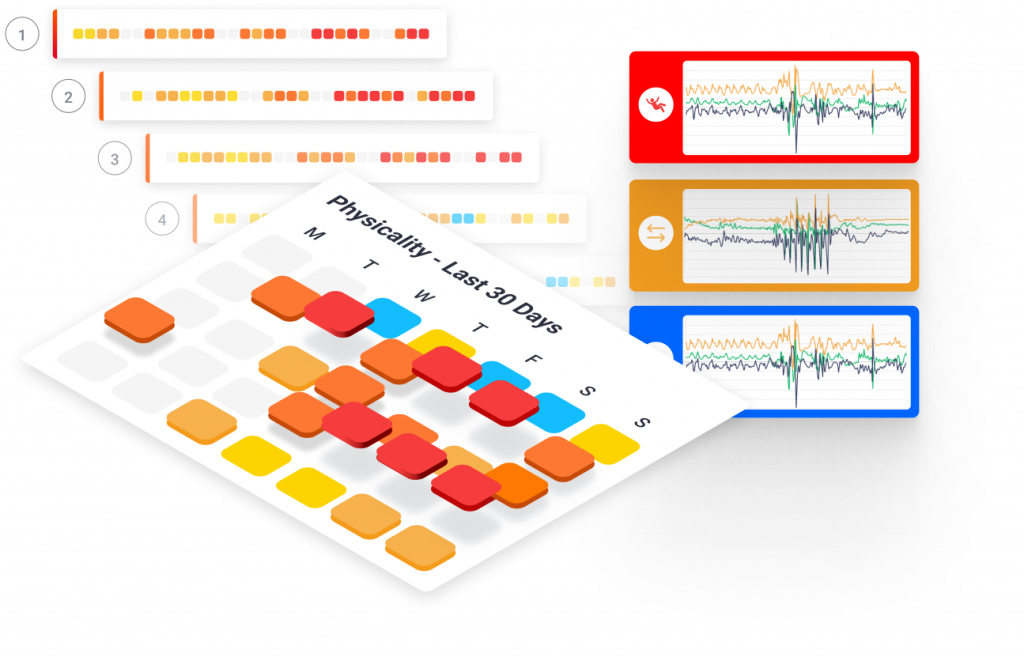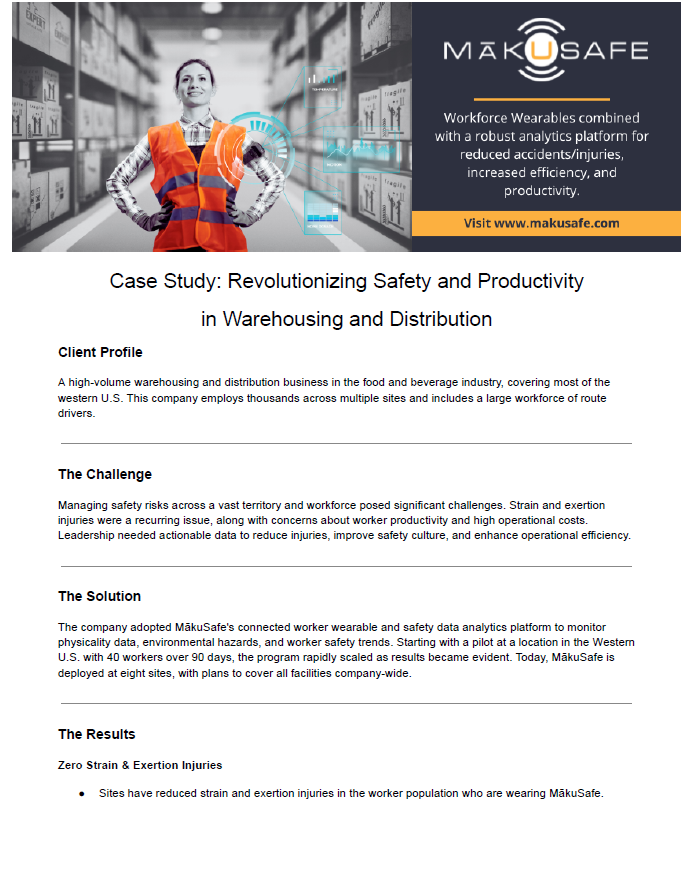Musculoskeletal Disorders
Reduce Strain & Exertion Injuries with MākuSafe®
Musculoskeletal disorders (MSDs) are among the most common and costly workplace injuries, often resulting from repetitive motions, forceful exertions, awkward postures, and slips, trips, and falls. MākuSafe’s innovative connected worker safety technology provides real-time insights to help prevent these injuries before they occur—supporting a safer, healthier, and more productive workforce.
MSDs are the single largest category of workplace injuries and are responsible for almost 30% of all workers’ compensation costs, according to the Bureau of Labor Statistics (BLS).
MākuSafe Motion Explorer provides the data you need to take corrective action before an injury causes a worker to seek medical attention or lose days of work.


Proactively Address Ergonomic Risks with Motion Explorer Live
MākuSafe’s Motion Explorer Live continuously monitors worker physicality and detects hazardous motions in real time, helping safety leaders quickly identify and mitigate risk factors associated with MSDs. Key capabilities include:
✅ Real-Time Motion Insights & Alerts – Detects high-risk movements, including slips, trips, falls, push-pull actions, repetitive strain, forceful exertion, and accelerated movements, enabling timely intervention.
✅ Effort & Exertion Monitoring – Aggregates overall worker physicality (effort expended over time), offering clear benchmarking to compare worker groups by facility, department, job role, or specific tasks.
✅ Data-Driven Ergonomic Improvements – Pinpoints areas where adjustments to workstations, processes, or training can reduce strain, fatigue, and injury risks.
✅ Worker-Centric Safety Insights – Helps employers understand the physical demands of different roles, allowing for smarter job rotation strategies and targeted ergonomic interventions to prevent overexertion.

The Problem with Constant Haptic Feedback
While some wearable solutions rely on continuous haptic alerts to warn workers of risky movements, this approach can lead to alert fatigue and diminishing effectiveness over time. Research suggests that frequent vibrations may become background noise, reducing a worker’s ability to recognize truly hazardous situations and even causing unnecessary stress or discomfort. Instead of constant interruptions, MākuSafe prioritizes actionable data insights—giving safety leaders the visibility to address ergonomic risks at the root cause, rather than overwhelming workers with repeated alerts. (Read more in our article: The Hidden Risks of Haptic Feedback)

Drive Meaningful Reductions in MSDs & Improve Workplace Safety
Ideally suited for manual material handling (MMH) workers!
By leveraging wearable motion data and advanced analytics, MākuSafe empowers organizations to proactively identify risk trends, reduce injury rates, and enhance workplace ergonomics—without compromising worker privacy.

Case Study: Revolutionizing Safety and Productivity
in Warehousing and Distribution
Read about how a high volume national warehousing and distribution organization implemented MākuSafe and; significantly impacted safety, reduced strain & exertion injuries to zero, enhanced productivity, and made data driven process changes.
Examples of Data Insights Uncovered by Motion Explorer:
- One worker in a team, all performing the same lift/twist/turn task, due to data gathered was found to have an unknown nagging shoulder injury. The estimated loss avoided was in excess of $170K in the eyes of the self insured customer.
- Aging workers were performing repetitive motions that were far more forceful and regular than leadership was aware of. The motion was to break up crystallized granular food ingredients, which no one ever thought could be responsible for significant impact over time. The company instituted new processes, and discussed quality with its suppliers as a result of the discovery.
- A worker, who was not thought to be on par with production line staff in terms of risk, exerted significant daily effort in moving work carts from station to station to do maintenance tasks. The carts were found to have broken casters causing needless strain, as a result of data gathered.
- Workers moving styrofoam were triggering hazardous motion indicators signaling high physicality and effort required of workers in lifting/moving materials. This wasn’t believed to be a concern previously because of the perceived weight of the styrofoam.
- A worker, far smaller than anyone on her team, was shown to be exerting herself far more than her coworkers to get the job done. Once her workstation was adjusted for height, the hazardous motion indicators disappeared.
- Workers at four different locations for the same company were all performing the same work roles, in similar facilities, using the same machines at similar workstations. Data showed work roles at one particular facility were working 750% harder in doing their jobs than the same roles being performed at three other sites.
Interested in preventing MSDs and cumulative trauma? Let us show you how Motion Explorer can provide you with the leading-indicator data you need to keep your workers safe and reduce claims! Start making data-driven safety improvements today.
Let’s Talk

